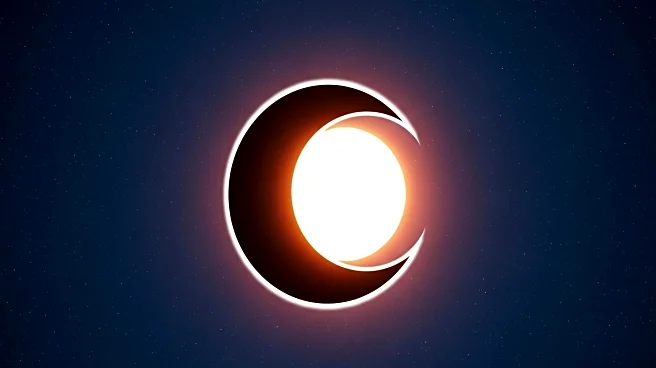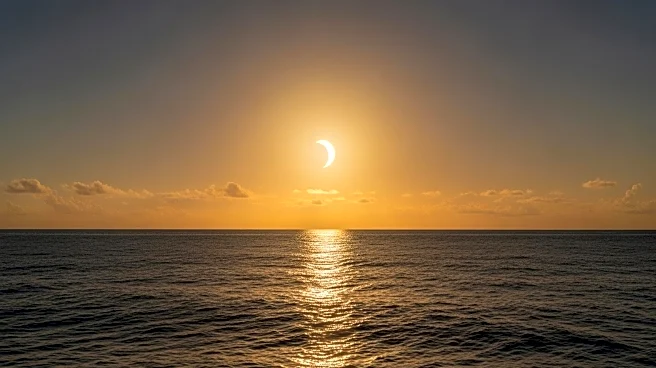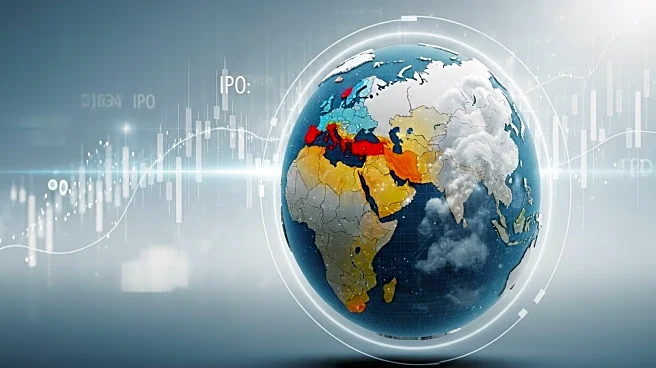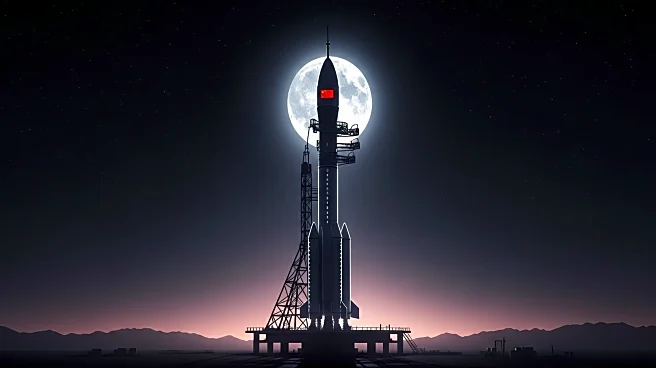What's Happening?
On September 21, 2025, a partial solar eclipse will occur, coinciding closely with the September equinox. This rare celestial alignment will be visible primarily in the Southern Hemisphere, including regions such as New Zealand, parts of Antarctica, and several Pacific islands. The eclipse will begin at 1:29 p.m. ET and reach its maximum at 3:41 p.m. ET. During this event, the moon will partially obscure the sun, creating the illusion of the moon 'taking a bite' out of the solar disk. While the eclipse will not be visible in North America, including the United States, live streams and coverage will allow global audiences to experience the spectacle.
Why It's Important?
The September 21 partial solar eclipse is significant due to its timing with the equinox, a moment when day and night are nearly equal worldwide. This alignment enhances the symbolic value of the event, offering a unique opportunity for astronomers and skywatchers to observe the interplay of light and shadow. Although the eclipse will not be visible in the U.S., it highlights the global interest in astronomical events and the advancements in technology that allow for widespread virtual participation. The event also serves as a precursor to the total solar eclipse expected in August 2026, which will be visible across large parts of North America.
What's Next?
While the September 21 eclipse will not be visible in the U.S., American sky enthusiasts can look forward to the total solar eclipse on August 12, 2026. This future event is expected to be a major spectacle, visible across the United States, Europe, and Africa, attracting millions of tourists and skywatchers. In the meantime, the availability of live streams for the September eclipse ensures that those unable to witness it directly can still engage with the event, fostering a shared global experience and appreciation for astronomy.
Beyond the Headlines
The September eclipse offers a chance for scientists stationed in Antarctica to study the event in pristine conditions, providing valuable data on solar phenomena. Additionally, the eclipse underscores the importance of safe viewing practices, as experts stress the need for proper eye protection to prevent damage. The event also highlights the cultural and educational impact of astronomy, encouraging public interest and understanding of celestial mechanics.














